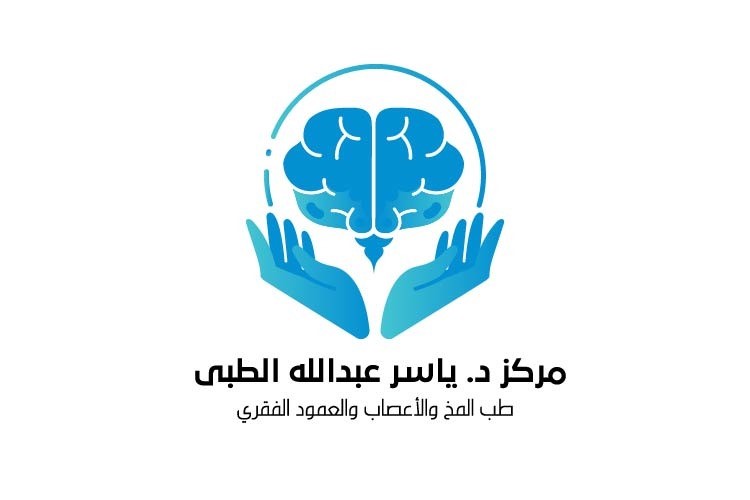 التحفيز المغناطيسي عبر الجمجمة (TMS) هو إجراء يستخدم المجالات المغناطيسية لتحفيز الخلايا العصبية في الدماغ لتحسين أعراض الاكتئاب الشديد. يطلق عليه إجراء "غير جراحي" لأنه يتم دون استخدام الجراحة أو قطع الجلد. تمت الموافقة على TMS من قبل إدارة الغذاء والدواء الأمريكية (FDA)، ويتم استخدامه عادة فقط عندما لا تكون علاجات الاكتئاب الأخرى فعالة.
وافقت إدارة الغذاء والدواء أيضًا على TMS لعلاج اضطراب الوسواس القهري (OCD)، والصداع النصفي، ولمساعدة الأشخاص على التوقف عن التدخين عندما لا تعمل العلاجات القياسية بشكل جيد. يستمر البحث في الاستخدامات المحتملة الأخرى لـ TMS، بما في ذلك الصرع.
عند استخدامه لعلاج الاكتئاب والوسواس القهري والتوقف عن التدخين، يتضمن هذا العلاج توصيل نبضات مغناطيسية متكررة، لذلك يطلق عليه TMS المتكرر أو rTMS.
أثناء جلسة rTMS لعلاج الاكتئاب، يتم وضع ملف كهرومغناطيسي على فروة رأسك. يقدم هذا الملف نبضات مغناطيسية تحفز الخلايا العصبية في منطقة الدماغ المسؤولة عن التحكم في المزاج والاكتئاب. يُعتقد أنه ينشط مناطق الدماغ التي انخفض نشاطها أثناء الاكتئاب.
قد تسمع أيضًا مصطلح "التحفيز المغناطيسي العميق عبر الجمجمة" أو "TMS العميق". الفرق بين rTMS و TMS العميق يتعلق بنوع الملف المستخدم. يحفز ملف TMS العميق مناطق أعمق وأوسع من الدماغ، مقارنة بـ rTMS. تمت الموافقة على ملفات Deep TMS من قبل إدارة الغذاء والدواء لعلاج الوسواس القهري والتوقف عن التدخين.
على الرغم من أن الأسباب البيولوجية وراء عمل TMS ليست مفهومة تمامًا، يبدو أن التحفيز يؤثر على كيفية عمل الدماغ. يبدو أنه يخفف أعراض الاكتئاب ويحسن المزاج.
هناك طرق مختلفة لأداء TMS. قد تتغير الأساليب عندما يتعلم الخبراء المزيد عن الطرق الأكثر فعالية لإجراء العلاجات.
التحفيز المغناطيسي عبر الجمجمة (TMS) هو إجراء يستخدم المجالات المغناطيسية لتحفيز الخلايا العصبية في الدماغ لتحسين أعراض الاكتئاب الشديد. يطلق عليه إجراء "غير جراحي" لأنه يتم دون استخدام الجراحة أو قطع الجلد. تمت الموافقة على TMS من قبل إدارة الغذاء والدواء الأمريكية (FDA)، ويتم استخدامه عادة فقط عندما لا تكون علاجات الاكتئاب الأخرى فعالة.
وافقت إدارة الغذاء والدواء أيضًا على TMS لعلاج اضطراب الوسواس القهري (OCD)، والصداع النصفي، ولمساعدة الأشخاص على التوقف عن التدخين عندما لا تعمل العلاجات القياسية بشكل جيد. يستمر البحث في الاستخدامات المحتملة الأخرى لـ TMS، بما في ذلك الصرع.
عند استخدامه لعلاج الاكتئاب والوسواس القهري والتوقف عن التدخين، يتضمن هذا العلاج توصيل نبضات مغناطيسية متكررة، لذلك يطلق عليه TMS المتكرر أو rTMS.
أثناء جلسة rTMS لعلاج الاكتئاب، يتم وضع ملف كهرومغناطيسي على فروة رأسك. يقدم هذا الملف نبضات مغناطيسية تحفز الخلايا العصبية في منطقة الدماغ المسؤولة عن التحكم في المزاج والاكتئاب. يُعتقد أنه ينشط مناطق الدماغ التي انخفض نشاطها أثناء الاكتئاب.
قد تسمع أيضًا مصطلح "التحفيز المغناطيسي العميق عبر الجمجمة" أو "TMS العميق". الفرق بين rTMS و TMS العميق يتعلق بنوع الملف المستخدم. يحفز ملف TMS العميق مناطق أعمق وأوسع من الدماغ، مقارنة بـ rTMS. تمت الموافقة على ملفات Deep TMS من قبل إدارة الغذاء والدواء لعلاج الوسواس القهري والتوقف عن التدخين.
على الرغم من أن الأسباب البيولوجية وراء عمل TMS ليست مفهومة تمامًا، يبدو أن التحفيز يؤثر على كيفية عمل الدماغ. يبدو أنه يخفف أعراض الاكتئاب ويحسن المزاج.
هناك طرق مختلفة لأداء TMS. قد تتغير الأساليب عندما يتعلم الخبراء المزيد عن الطرق الأكثر فعالية لإجراء العلاجات.
Transcranial magnetic stimulation (TMS) is a procedure that uses magnetic fields to stimulate nerve cells in the brain to improve symptoms of major depression. It's called a "noninvasive" procedure because it's done without using surgery or cutting the skin. Approved by the U.S. Food and Drug Administration (FDA), TMS usually is used only when other depression treatments haven't been effective.
The FDA also approved TMS for obsessive-compulsive disorder (OCD), migraines and to help people stop smoking when standard treatments haven't worked well. Research continues into other potential uses for TMS, including epilepsy.
When used for depression, OCD and to stop smoking, this treatment involves delivering repeated magnetic pulses, so it's called repetitive TMS or rTMS.
During an rTMS session for depression, an electromagnetic coil is placed against the scalp of your head. This coil delivers magnetic pulses that stimulate nerve cells in the region of your brain involved in mood control and depression. It's thought to activate regions of the brain that have decreased activity during depression.
You also may hear the term "deep transcranial magnetic stimulation" or "deep TMS." The difference between rTMS and deep TMS has to do with the type of coil used. The deep TMS coil stimulates deeper and wider areas of the brain, compared with rTMS. Deep TMS coils have been FDA-approved for OCD and to stop smoking.
Although the biology of why TMS works isn't completely understood, the stimulation appears to affect how the brain is working. It seems to ease depression symptoms and improve mood.
There are different ways to perform TMS. Methods may change as experts learn more about the most effective ways to perform treatments.
